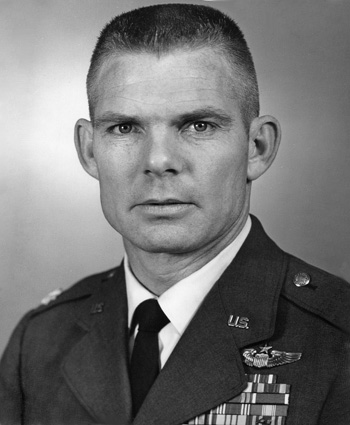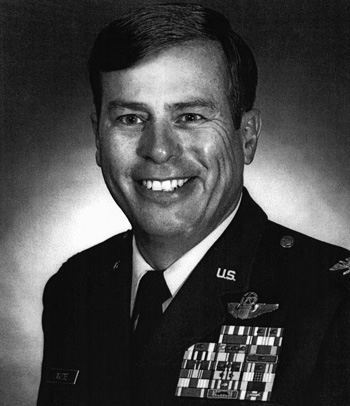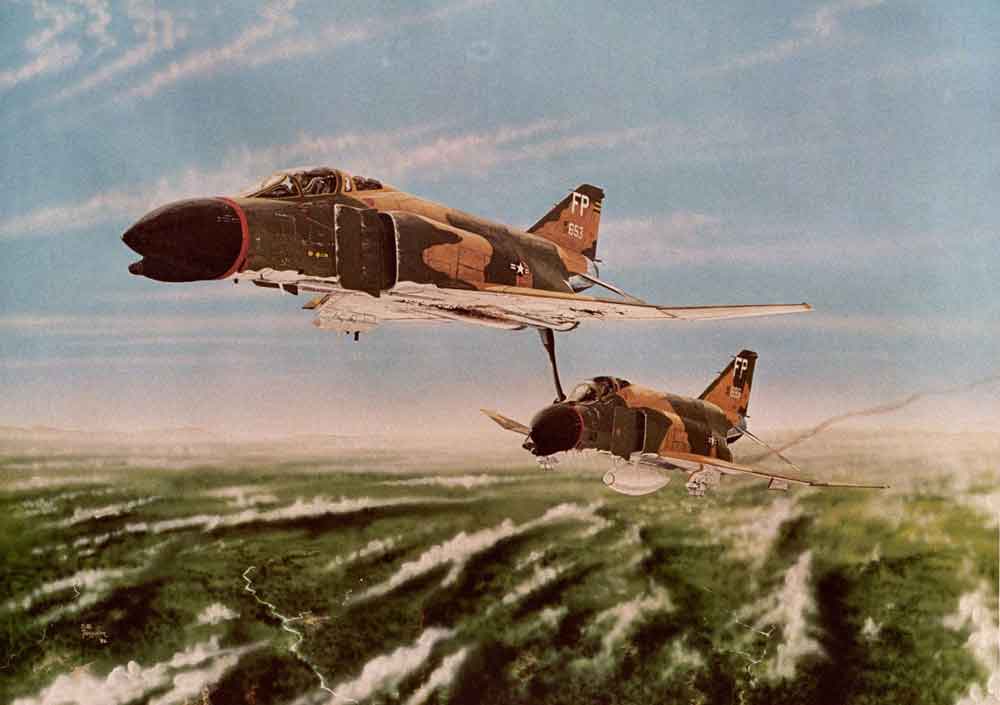
SILVER STAR
MAJOR JOHN R. PARDO, UNITED STATES AIR FORCE
Major John R. Pardo distinguished himself by gallantry in connection with military operations against an opposing armed force over North Vietnam on 10 March 1967. On that date, Major Pardo was flying as the pilot of the lead element on the return from a 1,000 mile flight in which heavy flak damage was encountered. He noticed that his wingman’s aircraft was in trouble and was advised that the aircraft was extremely low on fuel. Realizing that the wingman’s aircraft would not make it out of North Vietnam, Major Pardo implemented maneuvers to literally push the aircraft across the border. The attempt was successful and consequently allowed the crew to avoid becoming prisoners of war. By his gallantry and devotion to duty, Major Pardo has reflected great credit upon himself and the United States Air Force.


SILVER STAR
FIRST LIEUTENANT STEPHEN A. WAYNE, UNITED STATES AIR FORCE
First Lieutenant Stephen A. Wayne distinguished himself by gallantry in connection with military operations against an opposing armed force over North Vietnam on 10 March 1967. On that date, Lieutenant Wayne was flying as the copilot of the lead element on the return from a 1,000 mile flight in which heavy flak damage was encountered. He noticed that the wingman’s aircraft was in trouble and was advised that the aircraft was extremely low on fuel. Realizing that the wingman’s aircraft would not make it out of North Vietnam, Lieutenant Wayne assisted in implementing maneuvers to literally push the aircraft across the border. The attempt was successful and consequently allowed the crew to avoid becoming prisoners of war. By his gallantry and devotion to duty, Lieutenant Wayne has reflected great credit upon himself and the United States Air Force.


© 2016, Bryan R. Swopes
We didn’t steal anything from anyone. The JAG episode that depicted the “Push” didn’t appear until after I retired in 1974 and was interviewed by Ollie North. Necessity is the Mother of invention.
Colonel Pardo, my apologies. That was intended as satire between my son and myself. We were (are) both fully aware that the “JAG” episode was based on your very heroic flight. Again, I’m sorry.
Bryan R. Swopes
Why not make a movie of this..Pardo’s Push!
Kinetic refueling! I don’t think the Silver Star was enough.
Dear Mr. Bryan R. Swopes,
I read Your site with pleasure. I appreciate Your work and enjoy the interesting informations and photos.
At this day I have read Colonel Pardo’s great achievement with full of my enthusiasm. Previously I have watched a similar story with similar amazement on TV, at that time with F-86 Sabres. (https://www.imdb.com/title/tt0908312/)
I have found the documentary here: https://youtu.be/knSe5sNyRhE?t=1410 .
Mr. Robinson Risner’s career is accessible at Wikipedia, and that site is also write abut the event at September 15, 1952. (https://en.wikipedia.org/wiki/James_Robinson_Risner)
Another source about Brigadier General Robinson Risner – but without mentioning the “push manoeuvre”: https://www.af.mil/About-Us/Biographies/Display/Article/105823/brigadier-general-robinson-risner/ .
It seems to me that Mr. Risner and Mr. Pardo have found the same solution for the same problem. Ingenious idea, executed with outstanding flying skill.
Best regards from Budapest, Hungary,
Ferenc Boros
Thank you, Ferenc. I appreciate the information. I especially like the F-86. I’ll research as you suggest. —Bryan
I was in nam of 68 army engineer and loved the f4’s. Sometimes we would go to the air base in quinhon at night and see them take off, after burner really was a sight to see.
Amazing story! Curious of additional details of how the this was done. From the pic it appears the refueling boom was used.
The lead airplane lowered its arresting hook and Major Pardo positioned his Phantom so that the end of the hook was pressed against Pardo’s windshield.